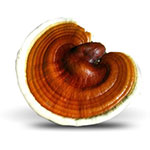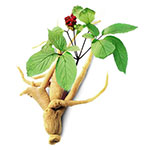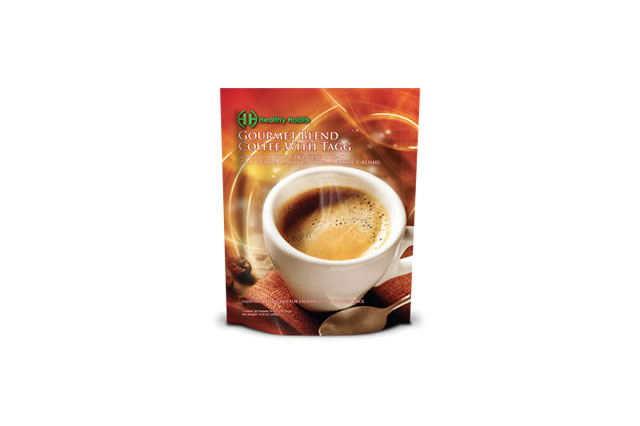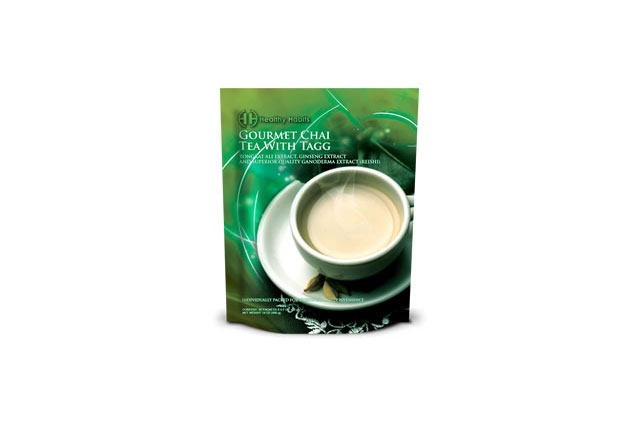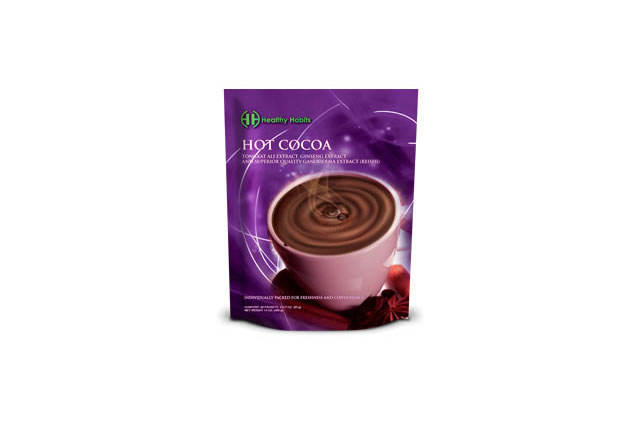T.A.G.G. History
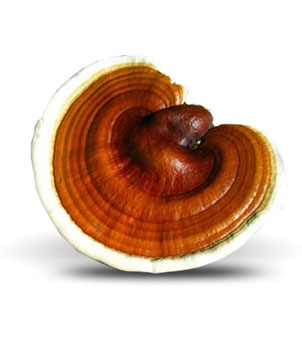
Ganoderma
The history of Ganoderma
In China, for over 2,000 years, the mushroom known as Reishi (Ganoderma lucidum) has been called “God’s Herb.” Also recognized by its Chinese name, Ling Zhi, Reishi’s reputation for being effective in treating a wide range of ailments moved Chinese Emperors throughout the various Dynasties to order servants to search for wild Ganoderma lucidum mushrooms found atop distant mountains, believing that the consumption of Ganoderma lucidum would grant them eternal youth and enhanced health. Because of the mushroom’s remote habitat and the scarcity of high-quality specimens, the use of Ganoderma lucidum for medicinal purposes was reserved primarily for royalty and wealthy individuals. It was not until the late 20th century, that this once-rare plant, through diligent cultivation by the Japanese, was made widely available to the general public.
The original textbook of Oriental medical science, “Herbal Pharmacopoeia,” was compiled by the founding father of Chinese medicine, Shen Nong (Han Dynasty, 206 BC ~ 8 AD). In it, the legendary herbalist-emperor documented 365 species of plants and classified them into three categories: superior, average and fair. These classifications were based on two main criteria: its benefits, based on consumption on a continual basis, and side effects. For those plants graded as “superior,” the power to harmonize the functions of the body, mind and spirit and the range of ailments they could treat were greater and broader than those of weaker specimens. In addition, they had to have little or no longterm side effects. Among the specimens in this class, G. lucidum was ranked the highest in this classic medical text, even superior to the well known ginseng. In the “Compendium of Materia Medica” (Ben Cao Gang Mu), which contains hundreds of natural medicines the Chinese have used for thousands of years, celebrated physician and naturalist Li Shi Zhen (1518~1593) described the benefits of G. lucidum: "It benefits the life energy, or "qi" of the heart, repairing the chest area and benefiting those with a knotted and tight chest. Taken over a long period of time, agility of the body will not cease, and the years are lengthened to those of the Immortal Fairies.”
Over the ages, Ganoderma lucidum has become ingrained in Oriental art and culture because of its prestigious status in Traditional Chinese Medicine (TCM). Since the first Chinese dynasty, paintings, embroideries, buildings, and sculptures of the gods and immortals have depicted G. lucidum as a symbol of divinity, longevity and good fortune. Depictions of G. lucidum are displayed throughout the Forbidden City and the Summer Palace in Beijing as a testimony to its value, and the mushroom’s distinctive shape was a favorite ornamental design feature used by royalty and the wealthy. Even the traditional scepter of the emperors of China was a stylized Reishi, called a "Ru Yi.”
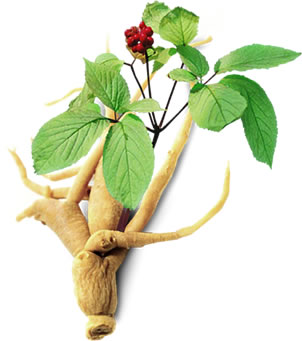
Panax Ginseng
The history of Panax Ginseng
Panax ginseng is believed to have been discovered in the Manchurian Mountains greater than 5,000 years ago. It was most likely first consumed as a source of food. However, archived documents reveal that ginseng was used and revered by kings, emperors, and wealthy households in the Far East for medicinal purposes in pre-historic times. The first written reference of Panax ginseng as a medicinal herb can be found in Shen Nong’s Materia Medica (the Ancient Chinese Canon of Medicine) dated from the 1st century, CE: “Ginseng is a tonic to the five viscera, quieting the animal spirits, stabilizing the soul, preventing fear, expelling the vicious energies, brightening the eye…and prolonging life.” Traditional Chinese herbal remedies stress the restorative properties of ginseng root—its ability to re-energize your chi or life force.
In northern China, it is a common practice for the elderly to take low daily doses of ginseng throughout the long, cold months of winter in order to boost their physical endurance and longevity.
The origins of the genus name Panax can be traced back to the Greek root words pan akos meaning “all cure”—an aptly named herb for all its purported health benefits. Acting as an adaptogen, its primary functions are as an anti-inflammatory agent, an antioxidant, immunity booster, and reproductive health tonic. More reported effects include increased muscle mass, physical vigor, and mental performance (memory, focus, and concentration). Clinical studies have shown that Korean red ginseng can enhance male sexual function and vitality. Combined with gingko, red ginseng can help treat erectile dysfunction as well as low sperm count. Ginseng has also demonstrated positive psychological effects in menopausal women by lessening feelings of fatigue and depression.
The part of the ginseng plant used for medicinal purpose is the root. Unlike other common roots found in gardens and grocery stores, ginseng root has an unusual physical appearance. The thicker knob-like top that branches into leg-like appendages gives the rough impression of a human-like figure. According to ancient herbalist beliefs, any plant that bears a resemblance to a certain body part is meant to be good for that body part. Hence, it follows that if ginseng root is shaped like a whole human person, then it must be a unique and powerful herb capable of treating the entire body.
As a slow-growing perennial plant that was historically over-hunted, it is now uncommon to find ginseng in the wild. Ginseng root generally takes four to six years to mature before it is harvested because the quality and potency of ginseng is believed to increase with age. China’s growing demand for ginseng root spurred Korea’s experimentation and cultivation of the world’s first farmed ginseng root in the sixteenth century. Today, both China and Korea have flourishing ginseng farming industries and are major exporters of ginseng products.
Nevertheless, Asian ginseng is not the only type of ginseng available as health supplements. American Ginseng (Panax quinquefolios) was first discovered in southern Canada by a French explorer and thought to be a rare herb to “invigorate the virile powers.” The Iroquois, Menomonee, Cherokee and Creek tribes all used ginseng for its natural curing powers. Native American folklore reveals that ginseng root was an early medicinal herb used to treat nosebleeds and infertility. It is believed that early American settlers discovered ginseng in the mid 1700’s in New England. Ginseng cultivation methods eventually spread West to Wisconsin, which has now become a leading ginseng producer. Americans were first skeptical of American ginseng, but it has since gained popularity in recent years as an aphrodisiac. America exports an estimated $100 million worth of ginseng per year, mainly to Asia where it is highly valued.
Asian herbalists regard American ginseng as having “cooling” powers and that type of ginseng is mainly used to treat fevers as well as digestive and respiratory ailments. In contrast, Asian ginseng such as the Korean red (steamed) ginseng and Chinese white (peeled) ginseng are considered to be “hot” herbs used to re-energize the body and restore overall strength and well-being.
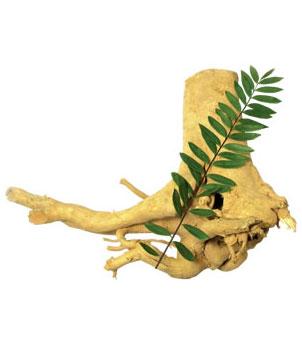
Tongkat Ali
The history of Tongkat Ali
(Latin name Eurycoma Longifolia Jack, Japanese Name ナガエカサ/ Nagaekasa ) is a small tree found in the jungles throughout Malaysia and Southeast Asia. Natives consider every part of the Eurycoma Longifolia tree as miracle herbs and often used its root to make soup as health drinks. It has been used in Malaysia for many years by men to increase sexual desire, libido, and sexual performance and to treat erectile dysfunction. To maintain the testosterone normal levels can improve energy, mood, fertility and sexual desire. Tongkat Ali is referred as a miracle herb and widespread in Malaysia and Southeast Asia and now also widely recognized by many countries because of its excellent effects.
Tongkat Ali is a small evergreen tree growing to 15m tall. It is spirally arranged, pinnate leaf 20-40 cm long with 13-41 leaflets. The flowers contain either male or female flowers on different trees never both; they are shaped in large panicles, each flower with 5-6 very small petals. The fruit is green ripening dark red, 1-2 cm long and 0.5-1 cm broad.
Unlike most trees, which have a horizontal root system, the root of a Tongkat Ali tree can grow up to 700 meters on sandy soil as understorey treelets. This tough fibrous root penetrates deep into the earth to obtain its nutrients. The Tongkat Ali root takes at least five years to mature.
The 5 Main Components of Ganoderma
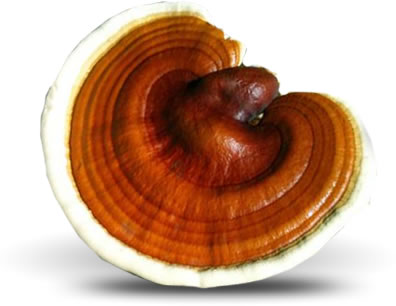
1. Polysaccharide
The amazing nutrients that are known to help strengthen cell membranes, boost anti-oxidant levels, and cleanse toxins from the body. Polysaccharides also moderate cholesterol and blood sugar levels, regulates digestive healthy and aids in the prevention of degenerative diseases.
2. Ganoderic Essence
The "Rejuvenator" as it assists in the detoxification and nourishment of the skin, the largest organ and "protector of body.” Helps prevent cellular damage from free radicals while boosting the natural nourishment of the skin. Studies have shown that Ganoderma extract helps in the recovery of certain skin diseases.
3. Triterpenoid
Known as Ganoderma's cholesterol-busting super adaptogens! Found to be the most important active substances in Ganoderma with anti-fungal, anti-bacterial, anti-viral and anti-inflammatory properties.
4. Adenosine
Referred to as the "Building Block of Life.” These properties have been found to improve the functions of the adrenal glands cortex to maintain hormonal balance. Found to help regulate and balance the metabolic rate, increasing energy. Found to assist in the suppression of blood clots, improving blood circulation. Also supports liver function.
5. Organic Germanium
Germanium's powerful potential healing capabilities are centered on three major changes it makes in your body's overall balance. Research suggests that Germanium is shown to discharge abnormal electrical impulses around cell abscesses, enhance your body's overall "effective" oxygen levels, and regulate your body's complete electrical system.
Qualities of Ganoderma
The Reishi mushroom, also known by its formal name of Ganoderma lucidum and its Chinese name Ling zhi, has attained an unparalleled reputation in the Orient as the ultimate herbal substance. For over three thousand years it has been the most sought-after product of nature by mountain sages and by the emperors and empresses of all Eastern nations. In the first Chinese herbal text (Shennong's Pharmacopoeia) written about 2400 years ago, Ganoderma lucidum was classified as a "superior herb" which is defined as one that "serves to maintain life, promote radiant health and long life because of its normalizing action, and to cause no side effects, even when used continuously. That ancient book said that "continuous consumption of Ganoderma lucidum makes your body light and young, lengthens your life and turns you into one like the immortal who never dies." Thus Ganoderma lucidum was traditionally called "the mushroom of immortality.”
The Ganoderma lucidum mushroom grows wild only upon old trees and roots of certain types of trees in remote mountain forests of China, Japan and Korea. Only in the last fifteen years have we seen the cultivation of Ganoderma lucidum, and thus the commercial availability of this amazing health product. Ganoderma lucidum has been the object of intensive scientific studies to discern its many health functions from a modern perspective. Traditionally, Ganoderma lucidum is believed to be a tonic to all of the body's energies. It was revered as a major tonic to each of the three Treasures, Jing, Qi and Shen. As a Jing (Essence) tonic, Ganoderma lucidum is believed to have major life-lengthening effects when consumed over a long period of time. It is believed to build primal power and to replenish energy spent handling stressful situations. As a Qi tonic, Ganoderma lucidum is used to build energy, although it is slightly sedative in the short run. It is most famous as an herb used to build the immune system.
Many studies done in Japan have shown Ganoderma lucidum to have a powerful effect on the body's overall resistance to disease. While medical research and individual case studies have shown red Ganoderma lucidum to be effective in treating numerous conditions and diseases, it is important to emphasize again that the greatest proven benefit of regular red Reishi consumption is the enhancement of your body’s overall health.
Through purification, improved blood flow, immune modulation, detoxification, rejuvenation, and revitalization, red Reishi can enhance the body's ability to combat a myriad of diseases, particularly those that occur more frequently with advanced age.
Obesity can affect one's self confidence and have a negative impact on one's self-image. In addition, it can lead to diabetes, and cardiovascular disease. Studies have found that regular consumption of red Reishi helps the body cleanse itself of accumulated toxins and excess lipids (fat).
In addition to regulating the body’s way of handling fat, red Reishi products can also improve the condition of the skin. The anti-aging properties of red Reishi may be related to improved blood flow and increased delivery of nutrients to the skin. It may also help in the reparation process of sun-damaged skin. People who have taken Ganoderma lucidum regularly have noticed a decrease in pimples (acne) and other blemishes. Control acne breakouts, enhanced skin complexion, minimize fine lines and lighten age spots.
Regular consumption of red Reishi also has a calming and stress-reducing effect on the body, and appears to improve sleep patterns, without the sedation commonly seen with medications. It should be clear to the reader that these benefits combined, will improve one's physical appearance. Regular red Reishi intake combined with a healthy diet and active lifestyle, can effectively facilitate your body’s return to a normal, healthy state.
On the Road to Better Health with Red Reishi
If we do not actively maintain a healthy lifestyle, our bodies will deteriorate, and we will gradually become accustomed to this state of declining health. We may lose track of weight that we have gained and not notice the decline in our natural well being until a significant problem arises. It is thought that over time, an inactive body accumulates toxins, and this contributes to the deterioration of overall wellness.
Consuming a red Reishi product on a regular basis is thought to clear some of these toxins. In the beginning, a user may experience a “resetting” period, where his or her body will exhibit signs of “cleansing.” The excretion of accumulated poisons and an increase in various metabolic activities are normal signs of recovery and they indicate that the regulatory properties of red Reishi are taking effect. Common symptoms of "recovery" may include dizziness, sore bones, skin irritation, change in bowel movements, including diarrhea and constipation, and pimple-like blemishes appearing on various parts of the body. The time frame for these symptoms may vary from person to person, but they generally last only a few days - until the body adjusts to a higher state of wellness and becomes accustomed to the regular intake of red Reishi. Daily consumption of large amounts of water is recommended. It is important to point out again that these physiological reactions are only temporary, unlike side effects from medications.
The curative and rejuvenating herbs from Celestial, are not a substitute for treatment prescribed by your doctor. Nor is the information intended to diagnose or prescribe. State and Federal Food and Drug laws prohibit representing that herbs, though reported successful in other countries, treat, cure or alleviate any disease. If you have a medical problem, don't hesitate to seek advice from a competent medical practitioner.
GINSENG

For more than 2,000 years, the roots of Panax plants have been valued in Chinese herbalism for their invigorating, adaptogenic, and tonic properties. The term "adaptogen" connotes an agent that purportedly "increases resistance to physical, chemical, and biological stress and builds up general vitality, including the physical and mental capacity for daily life. As a result of its long history of use, Panax Ginseng has been studied extensively by modern scientists and it has been found to possess hundreds of compounds, including ginsenosides, phenolics, and saccharides that contribute to its biological activity.
The main active components of Panax ginseng are ginsenosides, which have been shown to have a variety of beneficial effects, including antioxidant and anti-inflammatory effects. Results of clinical research studies demonstrate that Panax ginseng may improve psychological function, immune function, and conditions associated with diabetes. Panax ginseng is also commonly used to slow the aging process, enhance memory, boost stamina, stimulate the immune system and improve athletic performance.
Healthy Habits Global utilizes the most advanced innovative processes to extract the purest form of Panax ginseng. Healthy Habits Global products are the pure, refined blend of Chinese Panax Ginseng extract in the liquid form. The properties allow the blending and mixing process to give it the effects in aroma and efficiency in use.
TONGKAT ALI
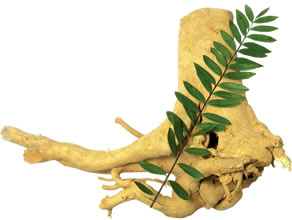
Tongkat Ali is an all-natural herb that helps increase testosterone in your blood. This herb is NOT a testosterone replacement, nor does is directly increase testosterone. Instead it triggers your body's ability to produce testosterone, combating the negative health risk revolved around Low Testosterone (low T) in both men and women.
Research suggests that low levels of testosterone may increase the risk for cardiovascular disease, obesity, stroke, type 2 diabetes, metabolic syndrome, osteoporosis, depression and Alzheimer's disease. Low testosterone can also trigger fatigue, low libido, erectile dysfunction, enlarged prostate, muscular weakness, poor endurance, irritability, poor concentration and poor memory.
Healthy Habits Global utilizes the most advanced innovative processes to extract the purest form of Tongkat Ali. Healthy Habits Global products are the pure, refined Tongkat Ali extract in the liquid form. The properties allow the blending and mixing process to give it the effects in aroma and efficiency in use.
Role of Testosterone in Women:
- Keep bones healthy. The correct balance of testosterone furthers and supports the growth and strength of healthy bones, while too much or too little can harm bones.
- Preserve cognitive health. Changes in cognition and cognitive fatigue may be related to changing hormone levels. Correcting testosterone levels might help prevent cognitive fatigue, according to research in Gynecological Endocrinology.
- Maintain sex drive. After menopause, women might experience a dip in their sex drive. This low sex drive could be the result of lowering testosterone levels.
- Manage pain levels. According to research in the journal “Pain,” women who take birth control pills and who have levels of testosterone that are out of balance with levels of estrogen might have less ability to manage their pain response.

HHG’s Inventive Opportunity
HHG is a unique company that allows you to have a recession proof residual income. While most others allow you to market in a niche, HHG has created a business plan in multiple industries with much to offer people that you love and care about.
HHG has created 3 divisions:
- HHG TAGG
- HHG FIT
- HHG WORLD
Through these three divisions, HHG has set out to do 3 very specific things that are the founders passion and purpose:
1. To impact millions of families lives through science backed nutritional products impacting your health.
2. To impact the World’s Health through their green, eco-friendly product line protecting our planet for future generations.
3. To provide a powerful life changing financial incentive program that will impact your Financial Health.
Download the complete Healthy Habits Global Financial Incentives Plan:

Click here to download the one page compensation plan summary
Unlike other businesses in the industry, HHG gives you the opportunity to build a business by referring many products to people you know that impact many areas of their daily lives; giving them better health, allowing their body and minds to run at optimum performance and helping them to save money on things they have to do everyday anyways!
Who do you know that wants to feel better?
Who do you know that already drinks coffee, tea, hot chocolate or energy drinks?
Who do you know that wants to lose some weight or just feel better?
Who do know that would like to save money on fuel every time they fill up their tanks?
As you can see, HHG’s diversified portfolio of products that is also continuing to expand, gives you the ability to refer many products to many people for many of their everyday needs. Now, here’s where it gets better!
HHG allows you to make referrals to these products and earn an income every time people purchase and use these products for the life of those customers. Refer them once and continue to get paid each and every month on any purchase they make. Get as many customers as you want and generate an income by helping others.
HHG also allows you to build a team by referring others to become partners. When they refer customers or other business partners, you can earn income on all those partners and customers as well. And here’s the best part, you can earn residual income as big as your team ever grows!
HHG is a global company already in many countries with heavy expansion into many more. You may know someone in another country that HHG operates in or will be operating in the near future or someone on your team knows someone in another country. When you or those people refer others internationally, you now have a global business that you get paid on every time purchases are made!
If you are someone interested in breaking the chains of the traditional 9-5 mentality working many hours a week to earn very little and sacrifice time away from your family and not earning what you deserve, HHG has a proven system in place for you to build your own business from home and get time and money together! HHG’s online training system along with their Success Training Institute gives you the ability to learn while you earn, around any full time schedule.
HHG’s Incentives Program was designed by individuals who started where you may be right now. Collectively, they have over 50+ years of experience building businesses from home with 100’s of thousand of partners and millions in commissions earned. The HHG Incentive Program was designed for the part time person having the ability to make a full time income.
Get back to the person who shared HHG with you and they can get you all the details on how you can start your own business today. We look forward to partnering with you and seeing all of your dreams come true. Your life can go from tragic to magic in a short period of time!
Welcome to the HHG Family!

Gourmet Black Coffee with T.A.G.G.
Healthy Habits Gourmet Black is infused with T.A.G.G. Tongkat Ali extract, Ginseng extract and Ganoderma extract. Our proprietary blend delivers over 4000 years of Chinese herbalism in every single cup. If the health benefits have not caught your attention the taste surely will. Our Gourmet Arabica Black will make a lasting impression as it is layered with rich flavors that is sure to leave you with a sharp, pleasant aftertaste. Ideal for the weight conscious. HHG’s Black Coffee contains 20 Individual servings per bag.
Benefits
- 154 Anti-Oxidants
- Anti-Candida
- Burns Fat
- 200+ Phytonutrients
- Immune Enhancer
- Enhance Endurance
Retail:
$23.95
Preferred Customer:
$16.00
Please contact your HHG Rep to order!
Become an HHG Preferred Customer and enjoy our wholesale pricing which is roughly 25% OFF. By becoming a preferred customer, you can enjoy priority shipping, easy ordering and flexibility of changing your orders by logging into to preferred customer account. There is no initial cost to become a PC, you just have to commit to a monthly order for 3 consecutive months. HHG has a diverse range of products and you are not locked in to the products you choose on your initial order. By logging into your PC account, you have the flexibility of changing or modifying your order and payment method when you choose, while continuing to enjoy our wholesale pricing. After the 3 month term, you can remain enjoying wholesale pricing on all of HHG’s products and you may cancel your monthly order at anytime. If you’d like to terminate your PC order prior to the 3 month term you will be charged a $20.00 one time charge. If you wish to cancel your PC order, it must me done 3 days prior to your order date to not be billed for that particular order.

Gourmet Blend Coffee with T.A.G.G.
Healthy Habits Gourmet Blend is infused with T.A.G.G. Tongkat Ali extract, Ginseng extract and Ganoderma extract. Our proprietary blend delivers over 4000 years of Chinese herbalism in every single cup. If the health benefits have not caught your attention the taste surely will as we have taken a coffee house classic and added our own little touch. Between the rich flavor, aroma, and frothiness we are sure that it will steal your heart. Ideal for the weight conscious. HHG Blend contains 20 Individual servings per bag.
Benefits
- 154 Anti-Oxidants
- Anti-Candida
- Burns Fat
- 200+ Phytonutrients
- Immune Enhancer
- Enhance Endurance
Retail:
$23.95
Preferred Customer:
$16.00
Please contact your HHG Rep to order!
Become an HHG Preferred Customer and enjoy our wholesale pricing which is roughly 25% OFF. By becoming a preferred customer, you can enjoy priority shipping, easy ordering and flexibility of changing your orders by logging into to preferred customer account. There is no initial cost to become a PC, you just have to commit to a monthly order for 3 consecutive months. HHG has a diverse range of products and you are not locked in to the products you choose on your initial order. By logging into your PC account, you have the flexibility of changing or modifying your order and payment method when you choose, while continuing to enjoy our wholesale pricing. After the 3 month term, you can remain enjoying wholesale pricing on all of HHG’s products and you may cancel your monthly order at anytime. If you’d like to terminate your PC order prior to the 3 month term you will be charged a $20.00 one time charge. If you wish to cancel your PC order, it must me done 3 days prior to your order date to not be billed for that particular order.
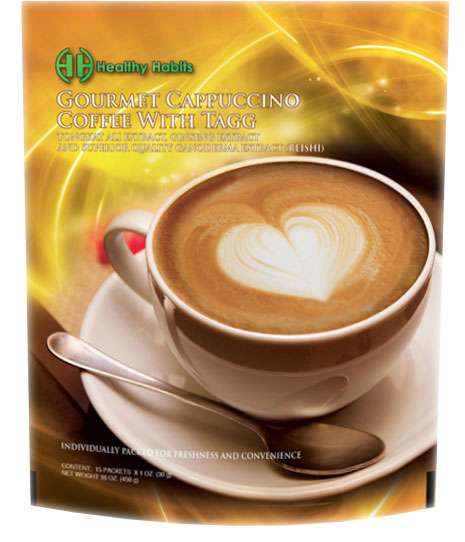
Gourmet Cappuccino with T.A.G.G.
Healthy Habits Gourmet Cappuccino is infused with T.A.G.G. Tongkat Ali extract, Ginseng extract and Ganoderma extract. Our proprietary blend delivers over 4000 years of Chinese herbalism in every single cup. If the health benefits have not caught your attention the taste surely will as we have created a Gourmet Cappuccino that is complex and intense in spirit, offering a strong espresso flavor along with a luxurious texture. Ideal for the weight conscious. HHG Cappuccino contains 15 Individual servings per bag.
Benefits
- 154 Anti-Oxidants
- Anti-Candida
- Burns Fat
- 200+ Phytonutrients
- Immune Enhancer
- Enhance Endurance
Retail:
$25.00
Preferred Customer:
$18.00
Please contact your HHG Rep to order!
Become an HHG Preferred Customer and enjoy our wholesale pricing which is roughly 25% OFF. By becoming a preferred customer, you can enjoy priority shipping, easy ordering and flexibility of changing your orders by logging into to preferred customer account. There is no initial cost to become a PC, you just have to commit to a monthly order for 3 consecutive months. HHG has a diverse range of products and you are not locked in to the products you choose on your initial order. By logging into your PC account, you have the flexibility of changing or modifying your order and payment method when you choose, while continuing to enjoy our wholesale pricing. After the 3 month term, you can remain enjoying wholesale pricing on all of HHG’s products and you may cancel your monthly order at anytime. If you’d like to terminate your PC order prior to the 3 month term you will be charged a $20.00 one time charge. If you wish to cancel your PC order, it must me done 3 days prior to your order date to not be billed for that particular order.
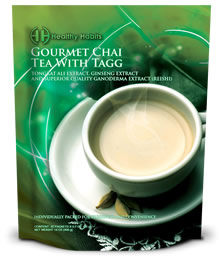
Gourmet Chai Tea with T.A.G.G.
Healthy Habits Gourmet Chai Tea is infused with T.A.G.G. Tongkat Ali extract, Ginseng extract and Ganoderma extract. Our proprietary blend delivers over 4000 years of Chinese herbalism in every single cup. If the health benefits have not caught your attention the taste surely will. Our Chai is surely a sophisticated treat! Let the aroma draw you in and you will find yourself enjoying aromatic sip after aromatic sip of delightful herbs and spices. Ideal for the weight conscious. HHG Chai Contains 20 Individual servings per bag.
Benefits
- 154 Anti-Oxidants
- Anti-Candida
- Burns Fat
- 200+ Phytonutrients
- Immune Enhancer
- Enhance Endurance
Retail:
$23.95
Preferred Customer:
$16.00
Please contact your HHG Rep to order!
Become an HHG Preferred Customer and enjoy our wholesale pricing which is roughly 25% OFF. By becoming a preferred customer, you can enjoy priority shipping, easy ordering and flexibility of changing your orders by logging into to preferred customer account. There is no initial cost to become a PC, you just have to commit to a monthly order for 3 consecutive months. HHG has a diverse range of products and you are not locked in to the products you choose on your initial order. By logging into your PC account, you have the flexibility of changing or modifying your order and payment method when you choose, while continuing to enjoy our wholesale pricing. After the 3 month term, you can remain enjoying wholesale pricing on all of HHG’s products and you may cancel your monthly order at anytime. If you’d like to terminate your PC order prior to the 3 month term you will be charged a $20.00 one time charge. If you wish to cancel your PC order, it must me done 3 days prior to your order date to not be billed for that particular order.

HHG Power Up Healthy Energy Beverage with Ganoderma (Reishi)
Power Up is an instant energy boosting powerhouse with Reishi extracts that helps to fight fatigue and keep you alert and energetic all day long. HHG Power Up contains 20 Individual servings per bag.
Benefits
- 154 Anti-Oxidants
- Anti-Candida
- Burns Fat
- 200+ Phytonutrients
- Immune Enhancer
- Enhance Endurance
Retail:
$23.95
Preferred Customer:
$16.00
Please contact your HHG Rep to order!
Become an HHG Preferred Customer and enjoy our wholesale pricing which is roughly 25% OFF. By becoming a preferred customer, you can enjoy priority shipping, easy ordering and flexibility of changing your orders by logging into to preferred customer account. There is no initial cost to become a PC, you just have to commit to a monthly order for 3 consecutive months. HHG has a diverse range of products and you are not locked in to the products you choose on your initial order. By logging into your PC account, you have the flexibility of changing or modifying your order and payment method when you choose, while continuing to enjoy our wholesale pricing. After the 3 month term, you can remain enjoying wholesale pricing on all of HHG’s products and you may cancel your monthly order at anytime. If you’d like to terminate your PC order prior to the 3 month term you will be charged a $20.00 one time charge. If you wish to cancel your PC order, it must me done 3 days prior to your order date to not be billed for that particular order.
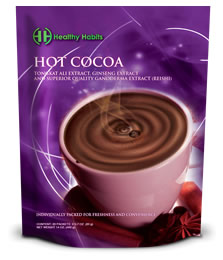
Gourmet Hot Cocoa with Ganoderma (Reishi)
Healthy Habits Gourmet Hot Cocoa is infused with superior quality Ganoderma extract, delivering over 4000 years of Chinese herbalism in every single cup. If the health benefits have not caught your attention the taste surely will. Our Gourmet Hot Cocoa is comfort in a cup! Rich in flavor and an all-time favorite beverage, kid tested and kid approved. Ideal for the weight conscious. HHG Gourmet Hot Cocoa contains 18 individual Servings per bag.
Benefits
- 154 Anti-Oxidants
- Anti-Candida
- Burns Fat
- 200+ Phytonutrients
- Immune Enhancer
- Enhance Endurance
Retail:
$25.00
Preferred Customer:
$21.95
Please contact your HHG Rep to order!
Become an HHG Preferred Customer and enjoy our wholesale pricing which is roughly 25% OFF. By becoming a preferred customer, you can enjoy priority shipping, easy ordering and flexibility of changing your orders by logging into to preferred customer account. There is no initial cost to become a PC, you just have to commit to a monthly order for 3 consecutive months. HHG has a diverse range of products and you are not locked in to the products you choose on your initial order. By logging into your PC account, you have the flexibility of changing or modifying your order and payment method when you choose, while continuing to enjoy our wholesale pricing. After the 3 month term, you can remain enjoying wholesale pricing on all of HHG’s products and you may cancel your monthly order at anytime. If you’d like to terminate your PC order prior to the 3 month term you will be charged a $20.00 one time charge. If you wish to cancel your PC order, it must me done 3 days prior to your order date to not be billed for that particular order.




